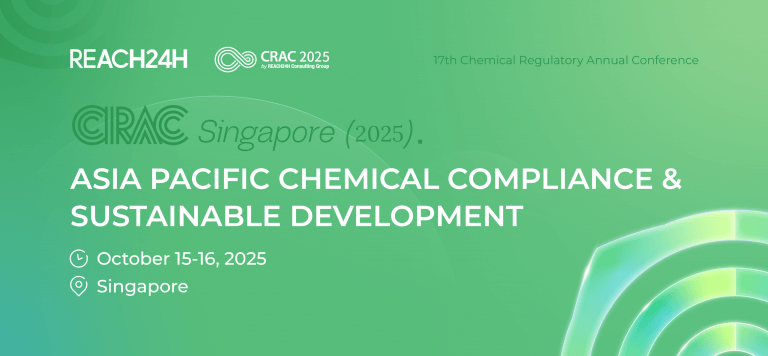Overview
On July 3, 2023, the Brazilian Association of Technical Standards (ABNT) officially released the revised GHS classification, SDS, and labeling standard—ABNT NBR 14725:2023. This updated standard aligns with the UN GHS Seventh Revised Edition and introduces a two-year transition period, with mandatory implementation set for July 4, 2025. This means all companies must complete their compliance updates by next month. Companies operating in Brazil must ensure compliance by this date to avoid potential regulatory risks.
Key Updates in ABNT NBR 14725:2023
The new standard consolidates four previous standards—ABNT NBR 14725-1:2009, ABNT NBR 14725-2:2019, ABNT NBR 14725-3:2017, and ABNT NBR 14725-4:2014—into a single, comprehensive ABNT NBR 14725:2023 document, making the content more complete and comprehensive. Below is a summary of the major updates regarding hazard classification, labeling, and SDS:
Hazard Classification in ABNT NBR 14725:2023
Changes to Hazard Building Blocks
The updated standard introduces new hazard categories and adjusts existing ones:Desensitized Explosives: A new physical hazard category for solid or liquid explosive substances or mixtures that have been desensitized to suppress their explosiveness, so they will not explode as a whole or burn rapidly. These now need to be classified into the Desensitized Explosives Category 1/2/3/4.Flammable Gases: The "Flammable Gases" Category 1 is now divided into Flammable Gases Category 1A and Flammable Gases Category 1B. Flammable Gases Category 1A is further subdivided into Flammable Gases, Pyrophoric Gases, Chemically Unstable Gases Category A, and Chemically Unstable Gases Category B.Hazard to the Ozone Layer: A new environmental hazard category for regulated substances listed in the Annexes of the Montreal Protocol, or any mixture containing at least one component listed in the Annexes of the Montreal Protocol at a concentration ≥0.1%. These will be classified as Hazard to the Ozone Layer Category 1.Adjustments to Concentration LimitsOptional general concentration limits are now available for classifications such as Respiratory Sensitizers Category 1, Skin Sensitizers Category 1, and Carcinogens Category 2.
Labeling Updates in ABNT NBR 14725:2023
Small Packaging (≤250ml) Alternative Labeling Methods
Alternative labeling methods, such as folding labels, hanging tags, or intermediate packaging, are permitted.
Unified Signal Word
"Attention" (Atenção) and "Warning" (Cuidado) have been unified to "Attention" (Atenção).
Changes to Specific Hazard and Precautionary Statements.
New hazard statements include: H206; H207, etc.
New precautionary statements include: P212; P302+P335+P334, etc.
Updated hazard statements include: H270 and H314.
Updated precautionary statements include: P103; P210, etc.
Removed precautionary statements include: P221; P235+P410, etc.
Requirements for Component Information Disclosure on Labels.
For mixtures or alloys, the label must include components that cause acute toxicity, severe skin corrosion, severe eye damage, germ cell mutagenicity, carcinogenicity, reproductive toxicity, skin or respiratory sensitization, specific target organ toxicity, and aspiration hazard.
For acute toxicity, severe skin corrosion, severe eye damage, specific target organ toxicity – single exposure Category 3, and aspiration hazard, it is optional to only show the most severe component for each hazard.
Safety Data Sheet (SDS) Changes (Portuguese abbreviation "FDS") in ABNT NBR 14725:2023
Document Name Change
The Safety Data Sheet, previously referred to as FISPQ (Ficha de Informações de Segurança de Produtos Químicos), should now be called FDS (Ficha com Dados de Segurança).
Emergency Telephone Requirements
Section 1 of the SDS must include a 24-hour emergency contact number.
This contact, provided by the supplier or a third party for information related to chemical product safety, health, and environmental concerns, is required to be available 24 hours a day in case of an emergency.
Mandatory Entry for Solid Products in SDS Section 9
For solid products, a new "Particle Characteristics" entry is mandatory in Section 9 of the SDS.
Business Obligations Under Brazil's New Standard
The mandatory implementation of Brazil's new standard requires companies to comprehensively update their chemical classification, SDS, and labels by July 4, 2025, to comply with the latest provisions of ABNT NBR 14725:2023. This includes changes such as the SDS name change, the provision of a 24-hour emergency telephone number, adjustments to hazard classification, updates to label elements, and the addition of the "Particle Characteristics" entry for solid product SDS. Timely compliance is crucial for ensuring products can smoothly enter the Brazilian market; otherwise, companies may face market risks such as customs clearance delays or fines.
How to Stay Compliant under ABNT NBR 14725:2023?
To ensure smooth market entry into Brazil, businesses should begin updating their documentation and processes now. Partnering with regulatory experts can help navigate these changes efficiently. REACH24H Consulting Group will continue monitoring GHS developments in Brazil and globally. For more information on ABNT NBR 14725:2023 or other regulations, feel free to contact us at customer@reach24h.com.





